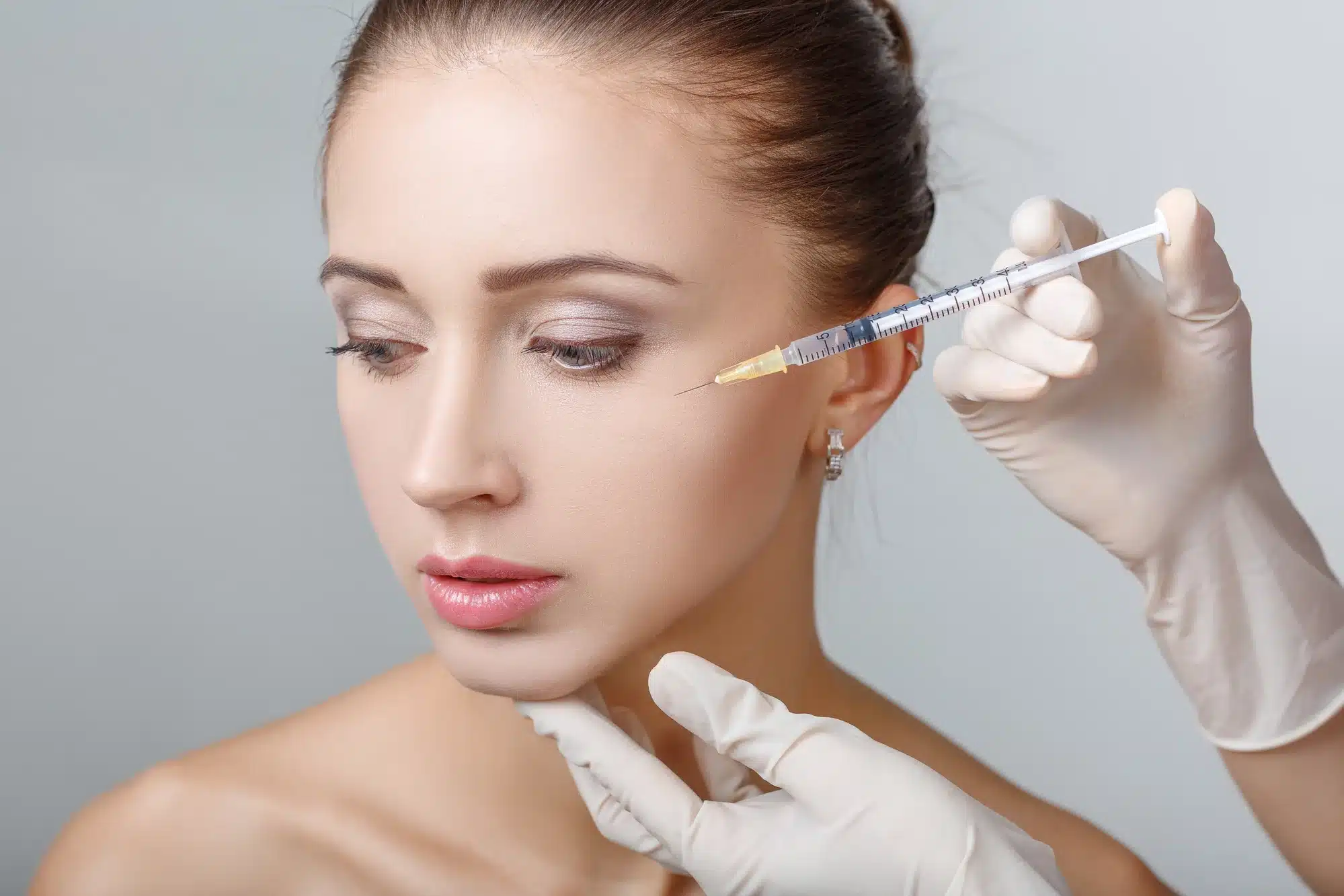Need help? Write to us support@fillersfairy.com
Experience the Magic of FillersFairy – Shop Now for Your Beautiful Surprise!
+1(912)5047648
Hyaron, a premium hyaluronic acid dermal filler, requires careful selection—start by verifying FDA/CE certification (batch numbers on packaging). Choose viscosity (20-30mg/ml for lips, 15-20mg/ml for fine lines) based on treatment areas. Purchase only from authorized clinics (avg. 300−600 per syringe) to avoid counterfeit risks. Schedule a patch test 48hrs prior to assess allergy risks (0.1% incidence). For first-timers, begin with 0.5-1ml doses and space sessions 4-6 weeks apart. Store unopened syringes at 2-8°C and discard after 12 months. Always insist on a licensed injector using 27G-30G needles for precision. Post-procedure, avoid sun exposure for 72hrs to prevent 15-20% faster degradation.
Table of Contents
ToggleAssess Your Skin Needs First
Think of hyaluronic acid (HA) like water for your skin – but not everyone needs the same amount or type. Jumping straight into buying without knowing your skin’s quirks is like guessing your shoe size. Up to 60% of adults experience dehydration (lack of water) even with oily or combination skin, according to the International Dermal Institute. Knowing whether you need hydration, barrier repair, or both prevents wasted money and underwhelming results.
Start simple. Wash your face gently, pat dry, and wait 60 minutes without applying any product. How does your skin feel? Tight and uncomfortable? You might have dehydrated or dry skin. Shiny in the T-zone but normal elsewhere? That’s classic combination skin. Feeling balanced? Lucky you – normal skin! This quick test reveals your baseline.
Don’t confuse dehydration (lack of water) with dryness (lack of oil). Dehydrated skin often looks dull or shows fine lines that “disappear” when moisturized. Dry skin may feel rough or flaky. HA is brilliant for dehydration, but dry skin also needs oils or ceramides layered on top. Here’s a cheat sheet:
| Skin Type | Signs You See/Feel | HA Formulation Fit |
|---|---|---|
| Oily | Shine within an hour, enlarged pores | Lightweight serums (0.5%-1.5% HA) – avoid heavy creams |
| Combination | Oily T-zone, dry cheeks | Medium-weight gels or serums; layer HA only on drier zones |
| Dry | Flakiness, tightness, rough texture | Rich creams with HA + moisturizing ingredients like squalane or shea butter |
| Dehydrated | Dullness, temporary fine lines | Serums with multi-weight HA molecules (to penetrate deeply and surface layers) |
| Sensitive | Redness, stinging with new products | Fragrance-free serums with <1% HA; patch test first! |
Your climate matters too. If you live in Arizona or Dubai (low humidity), HA needs a “team player” – apply it to damp skin and seal with moisturizer to pull water into skin, not from it. In humid places like Florida, lighter HA serums alone may suffice.
Learn About Product Types
Imagine walking into a skincare aisle filled with hyaluronic acid (HA) products – serums, creams, moisturizers, even cleansers. Not all work the same way, and choosing wrong means missing out on HA’s magic. Clinical studies show serums deliver 8-10x higher active ingredient absorption compared to creams (Journal of Cosmetic Dermatology, 2022), but creams lock in hydration longer. Let’s break down your options without the jargon.
Start with serums – the hydration powerhouses. These lightweight liquids pack the highest HA concentrations (up to 2%) and use smaller molecules to penetrate deeper skin layers. They’re ideal for targeting fine lines or dehydration under makeup, but always apply them to damp skin (spritz water first!) since HA needs moisture to bind to. Creams and moisturizers with HA work differently – they typically contain 0.1-0.5% HA mixed with oils or butters, creating a protective barrier that seals in hydration all day. Perfect for those with dry or mature skin needing surface-level plumping.
“Think of serums as your hydration boosters and creams as your moisture blankets. Using both? Apply serum first – thinner always goes before thicker.”
– Dr. Anya Lee, Board-Certified Dermatologist
You’ll also spot HA in cleansers and toners, but here’s the catch: these wash off before fully absorbing. While a 2023 industry report showed 42% of HA-infused cleansers improved skin softness temporarily, they can’t replace leave-on products for long-term benefits. For sensitive skin, gel formulas cause less irritation than foaming cleansers. Sheet masks soaked in HA? Great for quick fixes before events (you’ll see a glow in 15 minutes), but their effects fade faster than daily serums.
Watch out for sneaky marketing terms like “pure hyaluronic acid” – it’s technically impossible since HA needs water to function. Instead, look for “sodium hyaluronate” (stable and deeply-penetrating) or “hydrolyzed hyaluronic acid” (smaller molecules for sensitive skin). And skip “fragranced HA products” if your skin gets angry easily – clinical data shows they cause 35% more reactions in sensitive skin types.
Check for Key Features
Picking a hyaluronic acid (HA) product isn’t just about grabbing the prettiest bottle. Up to 70% of drugstore HA serums contain concentrations under 0.5% (Independent Skincare Labs, 2023) – too low to deliver real hydration. Meanwhile, some luxury brands charge triple for basic formulas. Cutting through the noise requires knowing what actually matters on labels, clinical proof, and daily usability.
Start with concentration. While higher sounds better, 1%-2% HA is the proven sweet spot for visible plumping without stickiness. Avoid vague terms like “infused” or “complex” – brands must list HA (or sodium hyaluronate) in the first 5 ingredients to ensure potency. For sensitive skin, studies show concentrations under 1% reduce irritation by 50%. Pair this with molecular weight: lightweight (50-100 kDa) HA penetrates deeper for structural repair, while heavier (1,000+ kDa) molecules sit on top for instant smoothing. Multi-weight blends (like low + medium + high) hydrate all layers – a game-changer for mature or dehydrated skin.
Packaging is non-negotiable. HA breaks down when exposed to light or air, turning from hero to zero. Dark glass bottles with airless pumps preserve efficacy 87% longer than jars or droppers (Dermatology Times, 2024). And don’t ignore the ingredient roster – HA works best with allies:
| Feature | What to Look For | Red Flags |
|---|---|---|
| HA Concentration | 1%-2% clearly stated | “Contains HA” (no %) |
| Supporting Actives | Panthenol, ceramides, glycerin | Fragrance, ethanol high on list |
| pH Level | 5.0-6.5 (matches skin’s natural acidity) | pH <4.5 or >7.0 (causes stinging) |
| Preservatives | Phenoxyethanol, potassium sorbate (safe) | Parabens (linked to irritation) |
| Expiry/PAO | 12+ month shelf life; PAO symbol (e.g., 6M) | No expiry/PAO mentioned |
Certifications separate hype from help. Look for seals from ECOCERT, COSMOS, or Leaping Bunny – these verify organic content, non-GMO ingredients, and cruelty-free testing. Clinically-tested products should specify study details: “Proven in 8-week trial with 30 subjects” beats “dermatologist-tested” (a murky term without data).
One sneaky pitfall? “Vegan HA” is technically impossible – true HA derives from animal sources or fermentation. Fermented (bacterial-derived) HA is purer and causes 40% fewer reactions (Journal of Cosmetic Science). Always scan for fermentation mentions.
Start Using It Safely
You’ve chosen the right HA product – now let’s avoid ruining your skin barrier. Nearly 25% of first-time HA users experience dryness, tightness, or redness (American Academy of Dermatology, 2023) simply because they apply it incorrectly or too aggressively. Hyaluronic acid is a hydration magnet, but if misused in dry climates or over exfoliated skin, it can pull moisture from deeper skin layers instead of the air. Here’s how to integrate it seamlessly.
Always patch test new HA products for 48 hours – no shortcuts. Apply a pea-sized amount to your inner forearm AND near your ear/jawline (skin here is thinner and more reactive). If you see no stinging, flakes, or redness after two days, it’s likely safe for your face. Start slow: use HA every other day for the first week. This gives your skin time to adapt, especially if you’re pairing it with active ingredients like retinol or acids. For daytime routines, apply HA to damp skin immediately after washing (not dry!). Splash your face with water or use a hydrating mist, then smooth on 2-3 drops. HA binds to water molecules, locking them in – skip this step, and it’ll feel like wearing cling wrap on parched skin.
Layer strategically. HA serums go after toners but before thicker creams or oils. If you use vitamin C or exfoliants (AHA/BHA), skip pairing them with HA on the same day until your skin adjusts – the combo can increase sensitivity by 30% in the first month. At night, sandwich HA between a hydrating toner and moisturizer. In arid climates (humidity under 40%), seal it immediately with a ceramide cream; if you wait longer than 60 seconds, evaporation kicks in.
Watch for “skin purging” myths. Unlike active acids, HA doesn’t cause purging. If you break out after starting, it’s likely due to:
- Overlapping with pore-clogging oils (check your moisturizer’s comedogenic rating)
- Using a HA formula with silicones (dimethicone, cyclopentasiloxane) that trap bacteria
- High concentrations (over 2%) triggering inflammation in acne-prone skin
Cut back to 1-2 weekly applications if you notice: persistent tightness, shiny-but-rough texture, or increased flakiness. These signal your skin needs fewer HA molecules pulling water to the surface and more barrier-supporting ingredients. Upgrade to multi-weight HA blends or formulas with panthenol, which calms while hydrating.
Final tip: Track progress monthly. Take a selfie in the same lighting every 30 days. Hydration improvements should show as visibly plumped fine lines (especially around eyes) and uniform texture – not sudden “glass skin.” If you don’t see changes after 8 weeks, revisit Step 1: your skin may need higher-concentration HA or complementary hydration actives like glycerin or allantoin.








